Railway Traction Motor Market Size
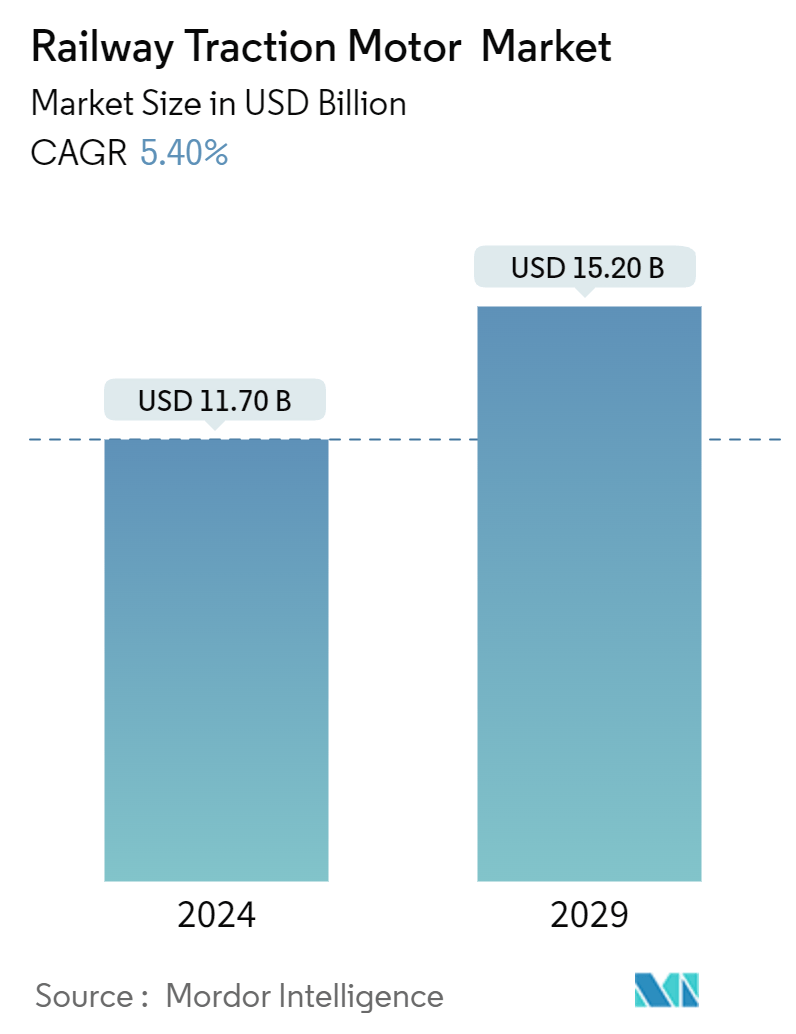
| Study Period | 2019 - 2029 |
| Market Size (2024) | USD 11.70 Billion |
| Market Size (2029) | USD 15.20 Billion |
| CAGR (2024 - 2029) | 5.40 % |
| Fastest Growing Market | Asia Pacific |
| Largest Market | Asia Pacific |
Major Players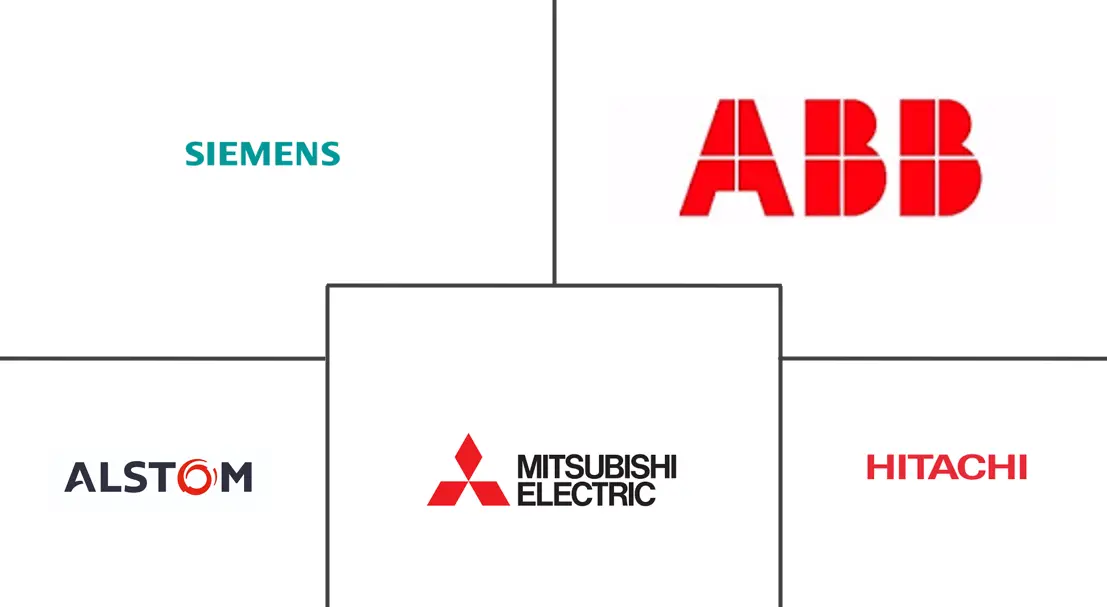
*Disclaimer: Major Players sorted in no particular order |
Railway Traction Motor Market Analysis
The Railway Traction Motor Market size is estimated at USD 11.70 billion in 2024, and is expected to reach USD 15.20 billion by 2029, growing at a CAGR of 5.40% during the forecast period (2024-2029).
The railway traction motor market is experiencing significant growth, driven by the expansion of rail networks, modernization of existing infrastructure, and increasing demand for energy-efficient and environmentally friendly transportation solutions. As urbanization continues to accelerate and the focus on reducing carbon emissions intensifies, railway systems are becoming a critical component of sustainable mobility strategies worldwide.
Governments worldwide are investing heavily in the expansion and upgradation of rail networks to meet the growing demand for public transportation and freight services. New high-speed rail projects, urban transit systems, and cross-border rail links contribute to the increased demand for advanced traction motors.
Also, innovations in traction motor technology, such as the development of more efficient AC motors like the Permanent Magnet Synchronous Motor (PMSM), and improvements in power electronics are enhancing the performance and reliability of railway systems. These advancements are crucial in reducing energy consumption and operational costs.
The transition from diesel-powered to electric-powered trains is a major trend in the railway industry. Electrification projects are being prioritized to improve energy efficiency and reduce emissions, thereby increasing the demand for electric traction motors.
Asia-Pacific is dominating the railway traction motor market, driven by large-scale investments in rail infrastructure in countries like China, India, and Japan. Rapid urbanization, economic growth, and government initiatives to enhance public transportation are key factors contributing to market growth in this region.
The future of the railway traction motor market looks promising, with continuous innovations and investments shaping its trajectory.
Railway Traction Motor Market Trends
DC Traction Motors Dominating the Railway Traction Motor Market
The railway traction motor market, a crucial segment within the global railway industry, is witnessing significant growth and transformation. Among the various traction motors available, DC traction motors have emerged as the dominant segment, driving much of the market's growth.
The primary reasons for the dominance of DC traction motors are their superior performance and efficiency. DC motors offer high torque at low speeds, which is particularly advantageous for railway applications where heavy loads must be moved from a standstill. This capability ensures smoother acceleration and deceleration, providing a better passenger experience and reducing wear and tear on the railway infrastructure.
Also, cost is a significant factor driving the preference for DC traction motors. Compared to their AC counterparts, DC motors are generally less expensive to produce and maintain. Their simpler design translates to lower manufacturing costs, and their long operational life reduces the need for frequent replacements. Additionally, the maintenance of DC traction motors is relatively straightforward, involving fewer complex components, which results in lower maintenance costs and downtime.
Many railway systems, especially in developing regions, have infrastructure that is already compatible with DC traction motors. This compatibility makes it more feasible and cost-effective to continue using DC motors rather than transitioning to AC systems, which would require significant investments in new infrastructure. The ease of integration with existing systems ensures that railways can upgrade their fleets without extensive modifications, further driving the demand for DC traction motors.
The demand for DC traction motors is bolstered by their wide range of applications within the railways. They are used in various types of rolling stock, including locomotives, metro trains, trams, and high-speed trains. The versatility of DC motors makes them suitable for different operational conditions, ranging from urban transit systems to long-distance freight services. This broad applicability ensures a steady demand across different segments of the railway industry.
The market for DC traction motors is expected to remain robust, supported by ongoing technological advancements and expanding railway networks worldwide. The development of more efficient and durable materials, coupled with innovations in motor design, will further enhance the performance and lifespan of DC traction motors.
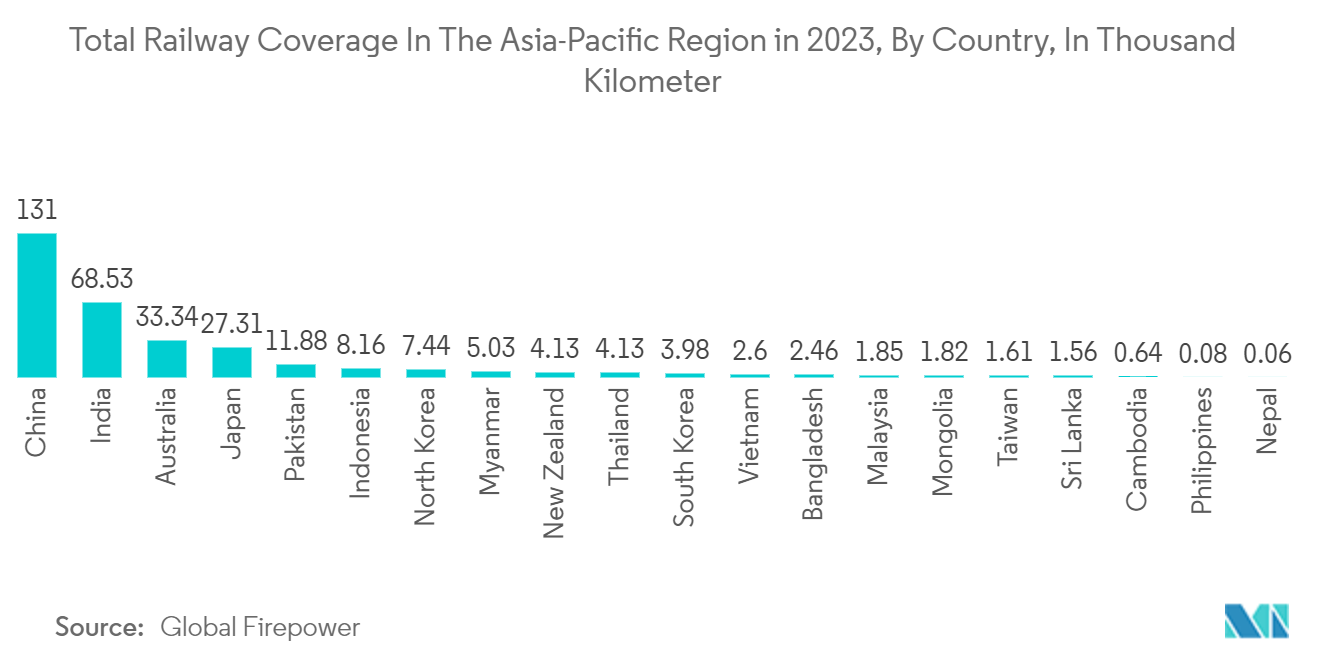
Asia-Pacific Dominating the Market for Railway Traction Motors
Asia-Pacific has emerged as the dominant regional segment in the global railway traction motor market, driven by economic growth, rapid urbanization, extensive rail infrastructure development, and technological advancements.
Asia-Pacific countries have experienced significant economic growth over the past few decades, leading to increased industrialization and urbanization. Countries like China, India, Japan, and South Korea have seen their urban populations expand rapidly, necessitating the development of efficient and reliable transportation systems. Railways, being a cost-effective and high-capacity mode of transport, have become a critical component of urban and intercity transportation networks. This surge in demand for rail transport has directly boosted the market for railway traction motors, which are essential for powering locomotives and multiple units.
Also, technological advancements play a pivotal role in the dominance of the Asia-Pacific railway traction motor market. Regional manufacturers and research institutions are at the forefront of developing innovative traction motor technologies. Electric traction motors, particularly those using advanced materials and designs, offer superior efficiency, reliability, and environmental benefits compared to traditional systems. Companies across the region are investing in R&D to enhance motor performance, reduce energy consumption, and improve durability. This focus on innovation ensures that the Asia-Pacific market remains competitive and can meet the evolving needs of the rail industry.
Asia-Pacific is home to some of the most extensive and rapidly expanding rail networks in the world. China, for example, boasts the largest high-speed rail network globally, with plans for further expansion. Japan's Shinkansen (bullet train) system is renowned for its speed and reliability, serving as a model for other countries. India is also expanding its rail network, focusing on both freight and passenger services. The continuous expansion of rail networks in the region drives the demand for traction motors, as new lines and upgraded services require modern, efficient propulsion systems.
The future outlook of the Asia-Pacific railway traction motor market remains positive. The region's commitment to infrastructure development, technological innovations, and sustainable transport solutions will continue to drive demand for traction motors. Emerging markets within the region, such as Southeast Asia, present new growth opportunities as they invest in rail infrastructure to support economic development. Furthermore, the increasing adoption of smart and automated rail systems will create demand for advanced traction motor technologies, ensuring sustained growth in the market.
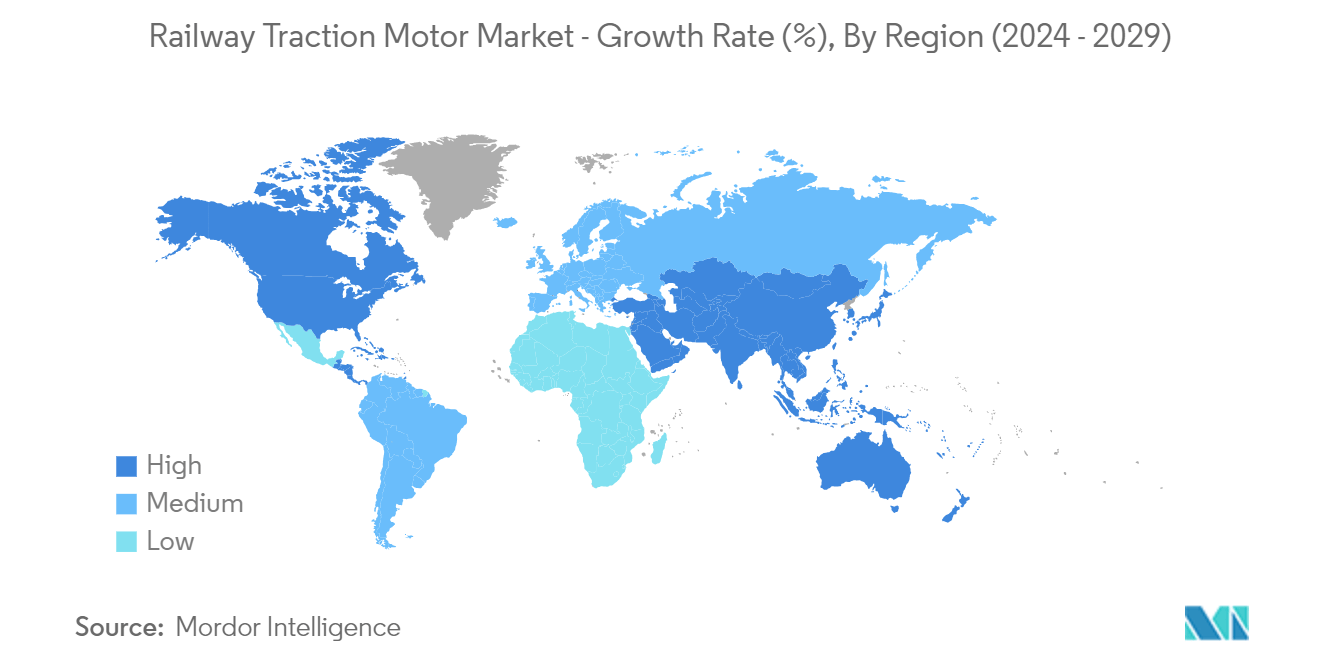
Railway Traction Motor Industry Overview
The railway traction motor market is consolidated and led by globally and regionally established players. These companies adopt strategies such as new product launches, collaborations, and mergers to sustain their market positions. For instance,
- In May 2023, Alstom NUG Propulsion System (ANP), Alstom's joint venture in China, introduced an innovative traction system on one of its trains. Passenger trial operations are currently being conducted in Chengdu, building on previous tests of the novel traction technology in Sweden.
- This new traction system's successful deployment and ongoing trials highlight Alstom's commitment to advancing rail technology and expanding its capabilities in both the Chinese and global markets.
Railway Traction Motor Market Leaders
-
ABB Ltd.
-
Alstom SA
-
Mitsubishi Electric Corporation
-
Siemens
-
Hitachi Ltd
*Disclaimer: Major Players sorted in no particular order
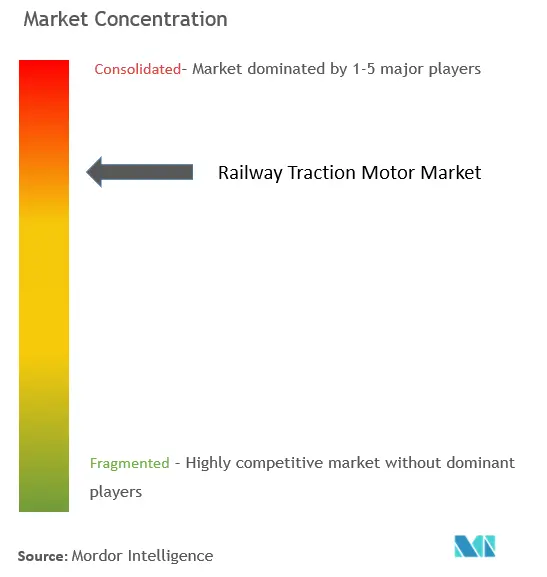
Railway Traction Motor Market News
- November 2023: In line with India's "Make in India" and "Atmanirbhar Bharat" initiatives, ABB partnered with Titagarh Rail Systems to supply propulsion systems for Indian metro projects. This partnership allows Titagarh to purchase ABB propulsion systems, including traction motors, auxiliary converters, traction converters, and TCMS software, and acquire manufacturing rights and production licenses for ABB traction motors and technology for GoA4 TCMS software.
- September 2023: CRRC Zhuzhou Electric, a unit of state-owned CRRC, developed China's first domestically made permanent magnet traction motor for 400 km/h trains. This TQ-800 motor unveiled in 2019 aims to increase efficiency and reduce reliance on foreign technology, breaking the monopoly previously held by overseas manufacturers. Previously, Chinese bullet trains that used different traction systems had a maximum speed of 350 km/h.
- July 2023: Škoda Group announced plans to supply up to 1,120 traction motors for a new fleet of trams being manufactured for Melbourne, Australia.
Railway Traction Motor Market Report - Table of Contents
1. INTRODUCTION
- 1.1 Study Deliverables
- 1.2 Study Assumptions
- 1.3 Scope of the Study
2. RESEARCH METHODOLOGY
3. EXECUTIVE SUMMARY
4. MARKET DYNAMICS
- 4.1 Market Overview
-
4.2 Market Drivers
- 4.2.1 Government Initiatives and Investments Driving Market Growth
-
4.3 Market Restraints
- 4.3.1 Maintenance and Reliability Issues Anticipated to Restrain Market Growth
-
4.4 Porter's Five Forces Analysis
- 4.4.1 Threat of New Entrants
- 4.4.2 Bargaining Power of Buyers/Consumers
- 4.4.3 Bargaining Power of Suppliers
- 4.4.4 Threat of Substitute Products
- 4.4.5 Intensity of Competitive Rivalry
5. MARKET SEGMENTATION
-
5.1 Type
- 5.1.1 DC Traction Motor
- 5.1.2 AC Traction Motor
- 5.1.3 Synchronous AC Traction Motor
-
5.2 Application
- 5.2.1 Diesel Locomotive
- 5.2.2 Electric Locomotive
- 5.2.3 Diesel-electric Locomotive
-
5.3 Geography
- 5.3.1 North America
- 5.3.1.1 United States
- 5.3.1.2 Canada
- 5.3.1.3 Mexico
- 5.3.1.4 Rest of North America
- 5.3.2 Europe
- 5.3.2.1 Germany
- 5.3.2.2 United Kingdom
- 5.3.2.3 France
- 5.3.2.4 Russia
- 5.3.2.5 Spain
- 5.3.2.6 Rest of Europe
- 5.3.3 Asia-Pacific
- 5.3.3.1 India
- 5.3.3.2 China
- 5.3.3.3 Japan
- 5.3.3.4 South Korea
- 5.3.3.5 Rest of Asia-Pacific
- 5.3.4 Rest of the World
- 5.3.4.1 South America
- 5.3.4.2 Middle East and Africa
6. COMPETITIVE LANDSCAPE
- 6.1 Vendor Market Share
-
6.2 Company Profiles
- 6.2.1 Alstom SA
- 6.2.2 CG Power and Industrial Solutions Limited (Murugappa Group)
- 6.2.3 VEM Group
- 6.2.4 Mitsubishi Electric Corporation
- 6.2.5 Saini Group
- 6.2.6 Siemens
- 6.2.7 Sulzer Ltd
- 6.2.8 Hyundai Motor Company
- 6.2.9 Hitachi Ltd
- *List Not Exhaustive
7. MARKET OPPORTUNITIES AND FUTURE TRENDS
** Subject To AvailablityRailway Traction Motor Industry Segmentation
A railway traction motor is an electric motor used to propel railway vehicles, such as locomotives, multiple units, trams, and other rail-based systems. These motors convert electrical energy into mechanical energy to drive the wheels of the train, enabling it to move along the tracks.
The railway traction motor market is segmented by type, application, and geography. By type, the market is segmented into DC traction motor, AC traction motor, and synchronous AC traction motor. By application, the market is segmented into diesel locomotives, electric locomotives, and diesel-electric locomotives. By geography, the market is segmented into North America, Europe, Asia-Pacific, South America, and Middle East and Africa.
The report covers the market sizes and forecasts in value (USD) for all the above segments.
| Type | DC Traction Motor | |
| AC Traction Motor | ||
| Synchronous AC Traction Motor | ||
| Application | Diesel Locomotive | |
| Electric Locomotive | ||
| Diesel-electric Locomotive | ||
| Geography | North America | United States |
| Canada | ||
| Mexico | ||
| Rest of North America | ||
| Geography | Europe | Germany |
| United Kingdom | ||
| France | ||
| Russia | ||
| Spain | ||
| Rest of Europe | ||
| Geography | Asia-Pacific | India |
| China | ||
| Japan | ||
| South Korea | ||
| Rest of Asia-Pacific | ||
| Geography | Rest of the World | South America |
| Middle East and Africa |
Railway Traction Motor Market Research FAQs
How big is the Railway Traction Motor Market?
The Railway Traction Motor Market size is expected to reach USD 11.70 billion in 2024 and grow at a CAGR of 5.40% to reach USD 15.20 billion by 2029.
What is the current Railway Traction Motor Market size?
In 2024, the Railway Traction Motor Market size is expected to reach USD 11.70 billion.
Who are the key players in Railway Traction Motor Market?
ABB Ltd., Alstom SA, Mitsubishi Electric Corporation, Siemens and Hitachi Ltd are the major companies operating in the Railway Traction Motor Market.
Which is the fastest growing region in Railway Traction Motor Market?
Asia Pacific is estimated to grow at the highest CAGR over the forecast period (2024-2029).
Which region has the biggest share in Railway Traction Motor Market?
In 2024, the Asia Pacific accounts for the largest market share in Railway Traction Motor Market.
What years does this Railway Traction Motor Market cover, and what was the market size in 2023?
In 2023, the Railway Traction Motor Market size was estimated at USD 11.07 billion. The report covers the Railway Traction Motor Market historical market size for years: 2019, 2020, 2021, 2022 and 2023. The report also forecasts the Railway Traction Motor Market size for years: 2024, 2025, 2026, 2027, 2028 and 2029.
Railway Traction Motor Industry Report
Statistics for the 2024 Railway Traction Motor market share, size and revenue growth rate, created by Mordor Intelligence™ Industry Reports. Railway Traction Motor analysis includes a market forecast outlook for 2024 to 2029 and historical overview. Get a sample of this industry analysis as a free report PDF download.



